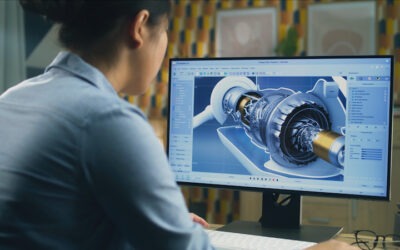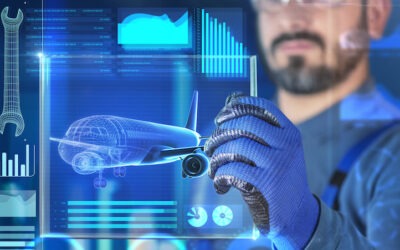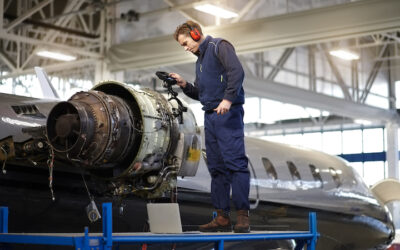Blog
Key Aspects of Technical Publications for the Aerospace Industry
Introduction
The aerospace industry is one of the most highly regulated sectors, where precision, compliance, and safety are paramount. Technical publications play a crucial role in ensuring that aircraft systems, components, and procedures are clearly documented for operators. A well-structured technical publication not only improves operational efficiency but also ensures compliance with aviation regulations and the continued airworthiness of the aircraft.
This blog explores the key aspects of aerospace technical publications for the operators, highlighting best practices, compliance requirements, and the impact of digital transformation
Importance of Technical Publications in Aerospace
Technical publications in aerospace provide essential documentation required for aircraft operation, and maintenance. These documents serve as an official source of information for engineers, mechanics, and flight operators, ensuring:
- Compliance with industry regulations.
- Continued airworthiness of the aircraft.
- Safe and efficient aircraft operation.
- Standardized procedures for maintenance and troubleshooting.
- Improved training and knowledge management for personnel.
Without accurate and up-to-date technical documentation, the operators would struggle to maintain compliance and operational integrity.
Technical Publications for type certification.
In accordance with aviation regulatory requirements, Instructions for Continued Airworthiness (ICA) are essential documents that ensure the ongoing safety and functionality of an aircraft, its engine, propeller, and related parts or appliances. These instructions, which must be developed or referenced by the Design Approval Holder(DAH). The holder of a type certificate, restricted type certificate, supplemental type certificate, design change, or repair design approval is obligated to provide at least one complete set of ICA to each known owner upon delivery of the product or the issuance of the first certificate of airworthiness. Additionally, these instructions must be made available upon request to any other individual required to comply with them. any amendments to the ICA must be communicated to all known operators of the affected product and made available on request to relevant parties.
Technical manuals are part of ICA, which has to be submitted during type certificate, restricted type certificate, supplemental type certificate, design change or repair design approval process. Failure to produce up to date technical manuals is considered as the product is not in full compliance, which may halt approval.
Types of Documentation Delivered to Operators
In the aerospace industry, technical documentation is categorized into various types, each tailored to serve a specific function. Across departments such as maintenance, repair, workshops, planning, and engineering. The following are among the most referenced documents by operators:
a) Aircraft Maintenance Manuals (AMM)
The Aircraft Maintenance Manual provides information required to service, repair, replace, adjust, inspect and check equipment and systems on the aircraft. These tasks are normally performed on the ramp or in the maintenance hangar.
b) Trouble Shooting Manual (TSM)
The Trouble Shooting Manual is provided to enable the systematic identification, isolation and correction of aircraft warnings and malfunctions reported in flight and on the ground.
c) Wiring Diagram Manuals (WDM)
WDMs provide detailed electrical wiring schematics for troubleshooting and repair. Each type of publication requires meticulous documentation and adherence to industry standards. Wiring Diagram manual is subdivided into three manuals: ASM, AWM and AWL The purpose of this manual is to permit a full understanding of electrical and electronic system, operation, troubleshooting and maintenance.
i. Aircraft Wiring Manual (AWM)
The Aircraft Wiring Manual provides the details of wiring connections.
ii. Aircraft Schematic Manual (ASM)
The Aircraft Schematic Manual provides block diagrams, simplified schematics and schematics of the aircraft electrical and electronic system.
iii. Aircraft Wiring List (AWL)
The Aircraft Wiring List provides a physical description of the electrical of the electrical equipment and the wire connections by mean of lists. It also provides part numbers for electrical component.
d) Flight Operations Manuals (FOM)
FOMs guide pilots and flight crews on aircraft operation, including standard operating procedures (SOPs), emergency procedures, and system configurations.
e) Illustrated Parts Catalog (IPC)
IPCs provide a visual and textual reference for aircraft components and spare parts, enabling quick identification and ordering.
f) Structural Repair Manuals (SRM)
SRMs outline repair guidelines for aircraft structures, including fuselage, wings, and landing gear, ensuring compliance with safety standards.
The Structural Repair Manual provides descriptive information as well as specific instructions and data related to the field repair of structures and structural components.
The SRM contains information about the allowable damage limits, material identification for structure subjects to field repair, typical repairs which are generally applicable to structural components of the airplane, that are most likely to be damaged.
In addition to that substitute materials and fastener information as well as a brief description of some procedures carried out in conjunction with structural repairs, such as protective treatment of repair parts and sealing of integral fuel tanks.
The Nacelle SRM (NSRM) cover the specific instructions and data related to the field repair of structures and structural components of the engine nacelle. The NSRM is provided by the engine manufacturer.
g) Non-destructive Testing Manual (NTM)
The Non-destructive Testing Manual provides specify Non-destructive Testing procedures for the aircraft. These procedures are intended to ensure early recognition of structural damage.
The recognition of structural damage at an early stage lets steps be taken which will prevent damage from becoming critical.
h) Service Bulletins (SB) and Airworthiness Directives (AD)
SBs and ADs contain mandatory modifications, updates, or corrections issued by manufacturers or regulatory bodies to address safety concerns or improve aircraft performance.
In addition to the above-listed manuals, the DAH must also produce the following manuals as part of ICA during certification. This list is not supposed to be exhaustive, nor is it a minimum list of ICA.
- Scheduled Maintenance Requirements (e.g. MRBRs)
- Off-Wing Component Maintenance or Overhaul Manuals
- Tooling Manuals
- Weight and Balance Manuals
- Electrical Loads Analyses
- Extended Range Operations (ETOPS) Configuration Maintenance Programs/Plans
- Supplemental Structural Inspection Documentation
- Certification Maintenance Requirements
- Airworthiness Limitations Items
- Aging Aircraft Maintenance Requirements
- Fuel tank safety related limitations (e.g. CDCCL)
- Electrical Wiring Interconnection System instructions
- Corrosion Prevention and Control Programmes.
Compliance and Regulatory Standards
The aerospace industry is governed by strict regulations to ensure safety and efficiency. Technical publications must comply with several regulatory and industry standards, including:
a) ATA iSpec 2200
ATA iSpec 2200 was developed by the Air Transport Association (now Airlines for America) and is primarily used in the commercial aviation sector. It builds upon the older ATA 100 specification and provides a standardized way to create, organize, and deliver maintenance documentation
b) S1000D
S1000D, on the other hand, is an international specification developed by the Aerospace and Defence Industries Association of Europe (ASD) and is more commonly used in defense and complex systems documentation. It supports a modular, XML-based structure built around data modules, which allows for highly reusable, component-based documentation. This makes S1000D ideal for organizations managing complex equipment across different platforms or projects. It is designed for digital delivery and integration with Interactive Electronic Technical Publications (IETPs), offering greater flexibility, scalability, and interoperability compared to ATA iSpec 2200.
c) MIL-STD-38784
MIL-STD-38784 is a U.S. military standard that provides guidelines for the preparation of technical manuals (TMs). It was originally established by the Department of Defense (DoD) to ensure consistency, usability, and quality in the creation of manuals for military equipment and systems.
Aviation regulatory authorities of the country
Aviation regulatory authorities in each country oversee the development and use of technical publications to ensure safety and compliance with airworthiness standards.
The authority (FAA, EASA, DGCA, CAA etc.) mandates that all technical publications meet strict safety and operational guidelines to comply with airworthiness requirements. provides technical documentation guidelines for aerospace operations.
Adhering to these standards ensures that aerospace technical publications meet industry best practices and regulatory expectations.
Best Practices for Creating Aerospace Technical Publications
To develop high-quality technical publications, aerospace documentation teams must follow best practices:
a) Accuracy and Clarity
All technical content should be precise, well-structured, and free of ambiguity to prevent operational errors.
b) Standardization
Using standardized formats like ATA iSpec 2200 and S1000D ensures uniformity across manuals, improving usability and compliance.
c) Visual Aids and Illustrations
Diagrams, schematics, and 3D animations enhance understanding, reducing the likelihood of misinterpretation.
d) Interactive and Digital Documentation
Modern aerospace publications should leverage digital formats, including Interactive Electronic Technical Publications (IETP) and augmented reality (AR) for maintenance training.
e) Revision Control and Updates
Regular updates are essential to reflect modifications, regulatory changes, and newly identified safety measures.
f) Multilingual Support
Since aviation is a global industry, technical documentation should be available in multiple languages for international teams.
g) Content Delivery:
Even when documentation is technically accurate and well-structured, it’s equally important to consider how that content is delivered. The medium of delivery plays a crucial role in how effectively users can access, read, and apply the information. Developing a robust electronic delivery platform—such as an Interactive Electronic Technical Publication (IETP)—that includes features tailored to the needs of operators can significantly enhance the user experience. This not only improves efficiency and usability but also builds trust with customers and strengthens the overall product-business relationship.
The Future of Aerospace Technical Publications: Digital Transformation
With the rise of digital technologies, technical documentation in the aerospace industry is undergoing a transformation. Key trends include:
a) Interactive Electronic Technical Manuals (IETMs) / Publications (IETP)
IETM and ITEP provide an interactive, digital alternative to traditional paper manuals, enabling real-time updates and easier navigation.
IETM/IETP is classified into different classes based on the level of interactivity and complexity in the digital technical documentation.
| Class | Description |
| Class 1 | Mimics a printed book. Includes index and table of contents with hyperlinks. Often a scanned book with added links. |
| Class 2 | More advanced than Class 1 with hyperlinks to figures, tables, and references. Usually, a hyperlinked PDF marked up with XML. |
| Class 3 | Structured like a website instead of a book. Uses extensive hyperlinks and is marked with XML. Presentation differs between print and screen. |
| Class 4 | Uses relational databases. Emphasizes data integrity, removal of redundancy, and dynamic, user-specific content. No linear format. |
| Class 5 | Integrates expert systems. Content display adapts based on user inputs and collective data analysis. Similar to Google search behaviour. |
| Class 6 | Employs network model databases and dynamic hyperlinking. Includes AR layers for maintenance and training. UI-independent data stream. |
b) Augmented Reality (AR) and Virtual Reality (VR)
AR and VR technologies enhance training and maintenance by providing immersive, real-time guidance on aircraft components and repair procedures.
c) Artificial Intelligence (AI)-Driven Documentation
AI-powered tools automate content creation, translation, and update processes, improving efficiency and reducing manual errors.
d) Blockchain for Documentation Integrity
Blockchain technology ensures the authenticity and traceability of technical publications, preventing unauthorized modifications.
e) Cloud-Based Documentation Management
Cloud-based platforms provide centralized access to manuals, enabling seamless updates and global distribution.
Conclusion
Technical publications are a cornerstone of aerospace operations, ensuring safety, compliance, and efficiency. As digital transformation continues to reshape the industry, adopting best practices and leveraging modern documentation technologies will enhance the effectiveness of technical manuals. By adhering to regulatory standards and incorporating interactive, AI-driven documentation solutions, aerospace companies can optimize their technical publications for the future.
Investing in high-quality technical publications not only improves operational efficiency but also reinforces safety and regulatory compliance, making it a vital aspect of the aerospace industry.
Related Articles
Demystifying S1000D-international specification for the production of technical publications
S1000D is built on a few key principles: modularity, reusability, and standardization.
Ensuring Quality Excellence
Discover how Cades Studec ensures quality excellence in technical documentation and engineering services, driving precision, reliability, and client satisfaction.
Modernizing Technical Documentation
Learn how to transition from traditional IPD manuals to the S2000M standard with Cades Studec, modernizing technical documentation for enhanced efficiency.



